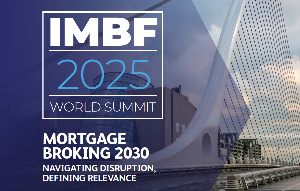
ASB and ANZ raised their long-term interest rates this week. ASB led, raising its two-year fixed term rate to 6.89%, up 10 basis points, the three-year rate up to 6.69%, four-year rate to 6.59% and five-year rate to 6.49% - all up 20 basis points.
ANZ went further increasing its two-year rate to 6.99%, three-year rate to 6.69%, four-year and five-year rates to 7.09% - all up 20 basis points.
However, SBS Bank has dropped its three-year fixed rate down to 5.99%, slicing off 30 basis points.
The OCR, swap rates and term deposits influence how banks’ interest rates are set and the ASB says the changing economic environment has driven up banks' borrowing cost.
In its latest quarterly Economic Forecast Update, ASB says the rest of the year will be tough with high interest rates and inflation maintaining the pressure.
But ASB chief economist Nick Tuffley says there are bright spots. “It looks as though the housing market is stabilising and we expect prices will start creeping back up in the coming year. So the first part of the economy to get hit hard by rising interest rates also looks like it’s the first to find a base and recover.
Although banks are playing up the positives of the economy, and mortgage repayments as a percentage of gross annual average household income dropped from a peak of 53% in the fourth quarter of last year to 49% in the June quarter this year, they remain well above the long-term average of 38%.
CoreLogic chief property economist Kelvin Davidson says, in the company’s Housing Affordability Report, although lower mortgage interest rates seem likely over the next few years, borrowers can’t expect relief via rate cuts in the immediate to short-term.
“Given the uneasy prospect that property values may start rising, albeit gradually, as is already starting to be seen in a couple of regions, this will only add to the strain on new home buyers, at least until interest rates start to come back down,” he says. “Rising incomes will only partially offset this.“
The main centres still have mortgage repayments as a percentage of gross household income at least eight percentage points higher than their own long-term averages, with Tauranga highest and Wellington the least.
Value to income ratio
Properties are now valued at 7.2 times the average household income, down from 7.8 six months ago.
Davidson says the figure has fallen in recent months as property values dipped and incomes continued to rise amidst the strong labour market, but remains above the long-term average of 6.1.
“The latest figure of 7.2 is significantly lower than the first quarter of 2022’s peak of 8.8 and is the lowest since 7.1 in the fourth quarter of 2020. In other words, a lot of the strain that emerged post-COVID has been easing but remains elevated by longer-term historical levels.”
Tauranga remains the least affordable city, with a value to income ratio of 9.5 in the second quarter of this year, followed by Auckland, Dunedin, Hamilton, Christchurch and Wellington.
“After a period of stretched affordability, the sharp falls in Wellington city house prices lately have seen this part of the country get markedly better in terms of purchasing power and it retains the title of most affordable from Christchurch for the second consecutive report”, Davidson says.
Years to save a deposit
The years to save a deposit measure fell to 9.6, still above the long-term average of 8.1, but two years better than the worst reading of 11.7 years in the first quarter of 2022. Again, the latest figure is the lowest since the fourth quarter at 12.6 years, well above its long-term average of 10.8 years, and the national figure of 9.6 years. However, it has started to improve, having peaked at 15.8 years in the first quarter of 2022.




Comments
No comments yet.
Sign In to add your comment